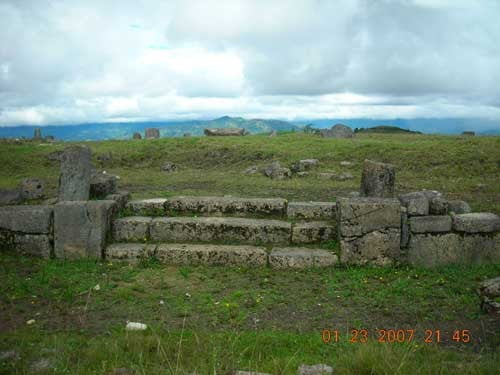
A group of Japanese and Peruvian archaeologists have unearthed the remains inside the tomb belonging to an ancient priest in northern Peru.

First-of-a-Kind Discovery
On August 26, archaeologist Juan Pablo Villanueva confirmed their discovery of the tomb at the Pacopampa belonging to a 3,000-year-old figure. The burial belongs to a man whom they referred to as the ‘La tumba del Sacerdote de 3000 años antes del presente’ (‘The tomb of the Priest from 3,000 years before the present’, or simply the ‘Priest of Pacopampa’).
The remains were buried one meter below the surface and correspond to about 1200 years BCE. His circular tomb measures three meters wide and one meter deep (10 feet by 3.3 feet). The archaeological site is located in the Cajamarca region, 900 kilometers (560 miles) north of Lima.
The figure is one of the first priests in the Andes region to have a series of offerings with intact funerary context. The body was found oriented from south to north with its lower extremities partially flexed. Small spherical ceramic bowls, a carved bone spatula, and other offerings were also found on the western side of the tomb.
Other artifacts include two seals, one with designs of a jaguar and the other with an anthropomorphic face. At least six layers of ash and earth were used to cover the body and the offerings. The first archaeological samples were found on the site nearly a century ago, but only recent discoveries have included the tombs of cultural elites and priestly figures.
READ ALSO: Toyota Corolla: The 2020 Toyota Corolla XSE is as Good as an SUV
Historical Significance of the Remnants
This discovery is significant because the figure is one of the first priests to gain control of the temples in Peru’s northern Andes. This was confirmed by Yuji Seki, a Japanese archaeologist who has been working at the site for 18 years. The research also involves other archaeologists from the National Museum of Ethnology in Japan and Peru’s National University of San Marcos.
The research team estimates that the priest lived around 1,000 BC. According to Seki, the artifacts helped demonstrate that even during the ancient times, powerful leaders had gained authority over the people in the Andes.
The same group of experts discovered the tomb of another priestly figure in September 2022. The figure was called the Priest of the Pututus and was accompanied by musical instruments made of seashells. Pututos or pututus are conch-like shells used by inhabitants of ancient Peru to make trumpet-like sounds. This priest, estimated to be in his mid-thirties, was buried with gemstones, jewelry, and cuttings of San Pedro cacti.
Located at an altitude of 2,500 meters (8,200 feet) above sea level, the Pacopampa site includes nine monumental buildings made of carved and polished stone for rituals and ceremonies. Other burials were found in the same site, such as the “Lady of Pacopampa,” discovered in 2009, and the two “Jaguar Serpent priests” unearthed in 2015. Both the remains were estimated to date from around 700 to 600 years BC.
3,000-Year-Old Tomb in Peru













One thought on “Ancient Priest’s Remains Discovered From 3,000-Year-Old Tomb in Peru, First-of-a-Kind Discovery for Peruvian Team”